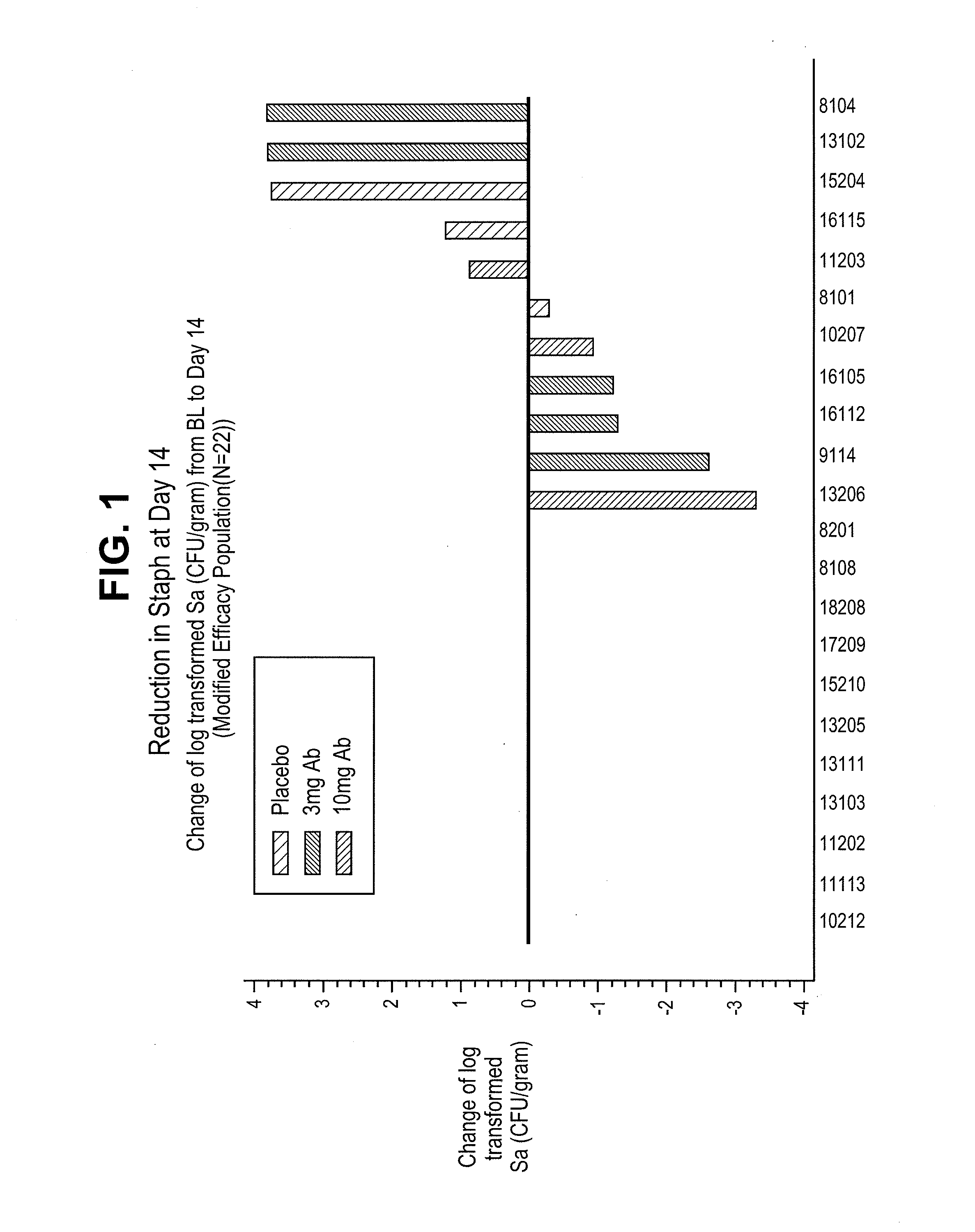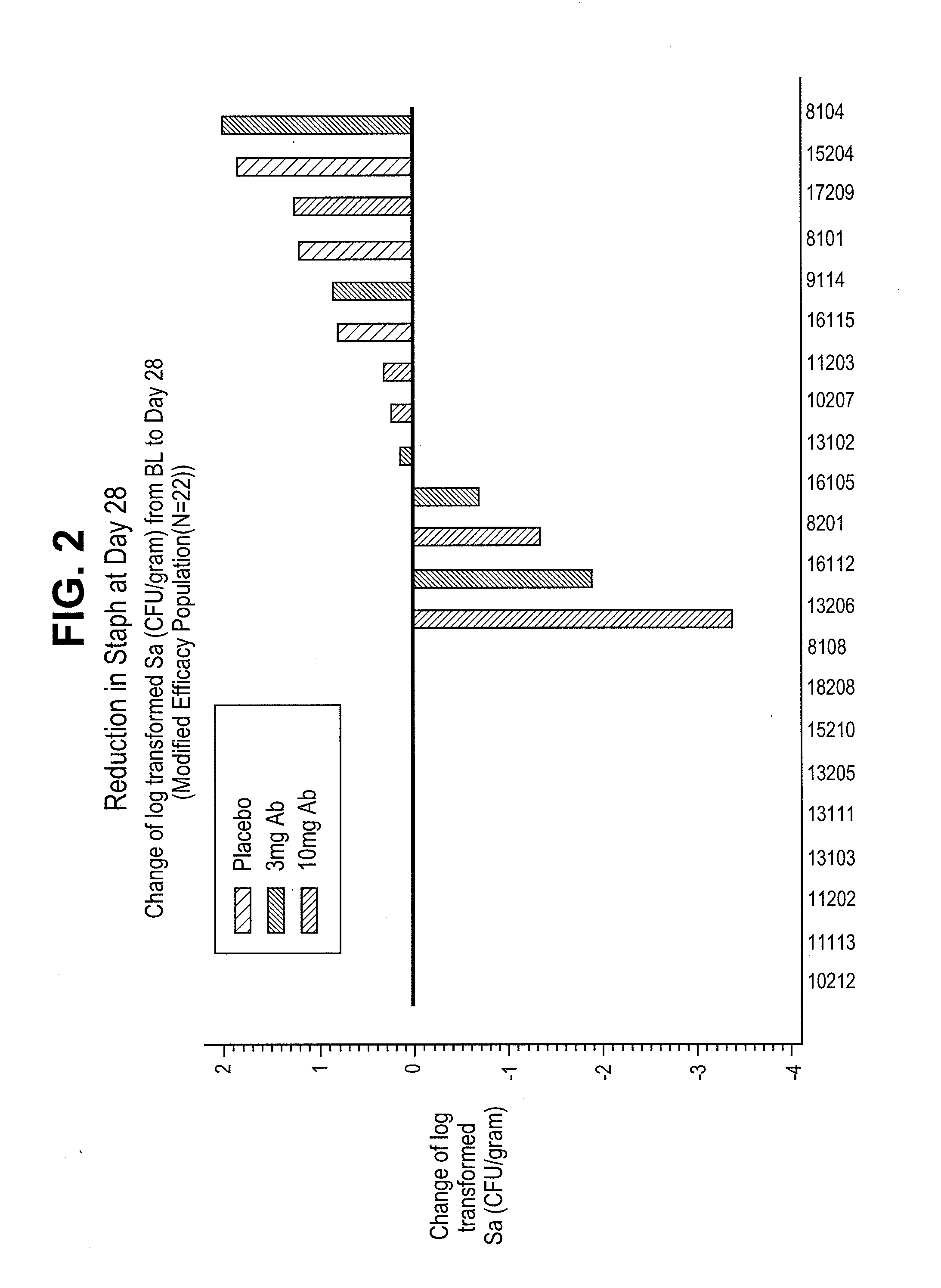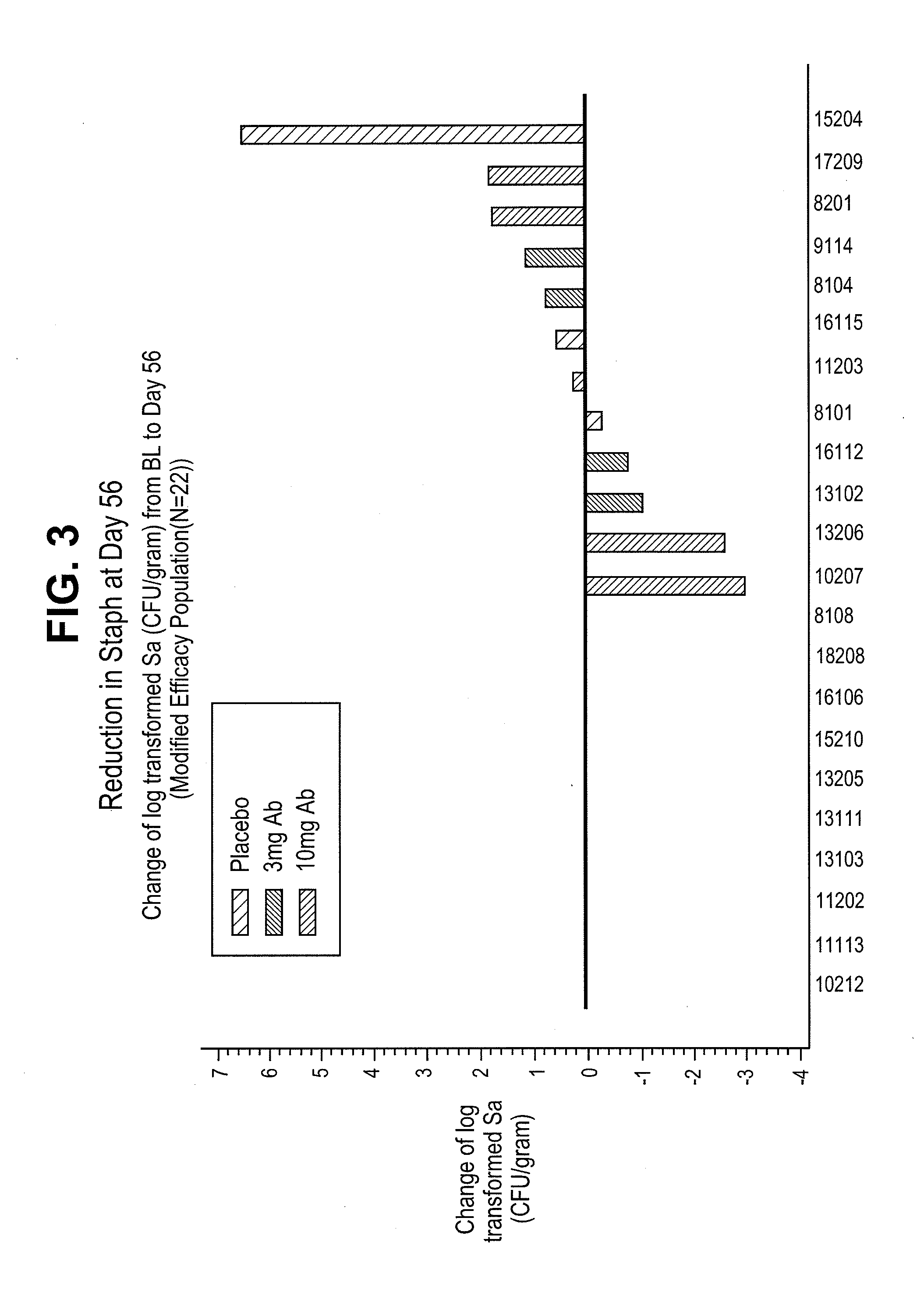Method of treating a staphylococcus infection in a patient having a low-level pathogenic pseudomonas aeruginosa infection
a staphylococcus infection and low-level technology, applied in the field of staphylococcus infection in patients with low-level pathogenic pseudomonas aeruginosa infection, can solve the problems of increased infection risk of neutropenic individuals, cellular immunity, and certain congenital deficiencies, and achieve the effect of reducing the level of p, reducing the risk of infection, and reducing the level of s
- Summary
- Abstract
- Description
- Claims
- Application Information
AI Technical Summary
Benefits of technology
Problems solved by technology
Method used
Image
Examples
example 1
Treatment of CF Patients with Anti-PcrV Antibody
[0105]CF patients were treated with a single intravenous injection of a humaneered antibody antagonist of the P. aeruginosa TSSS. Antibody was administered at a dose of either 3 mg / kg or 10 mg / kg on day 0. Bacterial counts were measured by taking induced sputum from patients at specified times following treatment plating out on agar plates. Colonies of Staphylococcus aureus (Sa) were counted after incubation for 24 hours at 30° C. FIGS. 1-3 show the reduction in Staphylococcus aureus levels in sputum samples taken at day 14, day 28, and day 56 following treatment with the anti-PcrV antibody. Treatment reduced the level of Staphylococcus aureus by as much as 3 logs.
example 2
Treatment of Mechanically Ventilated Patients with Anti-PcrV Antibody
[0106]Mechanically ventilated patients with respiratory tract colonization with Pseudomonas aeruginosa (>103 cfu / ml but 6 cfu / ml ETA at day 0) were dosed I.V. at either 3 or 10 mg / kg of anti-PcrV antibody or with placebo. Patients were evaluated for 28 days following dosing. Endotracheal aspirates (ETA) or bronchiolar lavage (BAL) samples were plated out on agar plates to determine bacterial load. The results show that 11 / 39 patients with respiratory tract colonization with Pseudomonas vaeruginosa developed Staphylococcus aureus colonization. In 5 / 11 patients treated with the antibody the Staphylococcus aureus titer exceeded the Pseudomonas aeruginosa titer and in 4 / 5 of these patients there was a reduction (1 / 4) or complete elimination (3 / 4) of Staphylococcus aureus from the ETA and / or BAL fluid. These results are consistent with anti-PcrV antibody exerting an anti-Staphyloccal effect in patients colonized with hi...
PUM
| Property | Measurement | Unit |
|---|---|---|
| Fraction | aaaaa | aaaaa |
| Electrical resistance | aaaaa | aaaaa |
| Selectivity | aaaaa | aaaaa |
Abstract
Description
Claims
Application Information
 Login to View More
Login to View More - R&D
- Intellectual Property
- Life Sciences
- Materials
- Tech Scout
- Unparalleled Data Quality
- Higher Quality Content
- 60% Fewer Hallucinations
Browse by: Latest US Patents, China's latest patents, Technical Efficacy Thesaurus, Application Domain, Technology Topic, Popular Technical Reports.
© 2025 PatSnap. All rights reserved.Legal|Privacy policy|Modern Slavery Act Transparency Statement|Sitemap|About US| Contact US: help@patsnap.com



